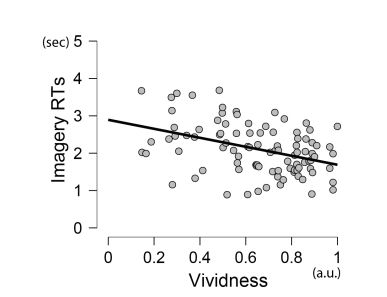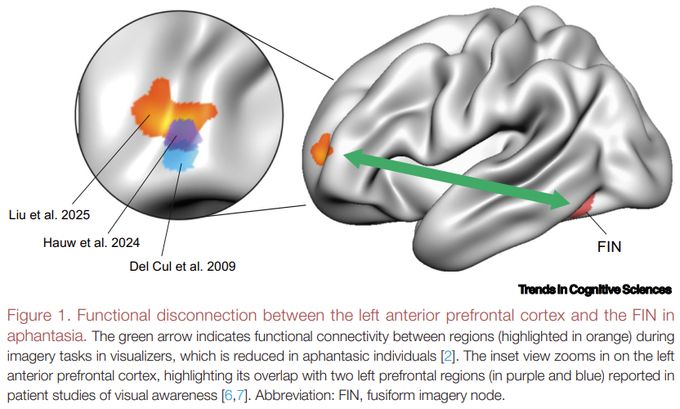
my website: https://jianghao-liu.github.io

-> dorsal attention network: hierarchical processing: generation (lIFG, IPS); integration (FIN), and amplification (PFC)
-> ventral attention network: switching between internal/external states and suppresses distractors.

-> dorsal attention network: hierarchical processing: generation (lIFG, IPS); integration (FIN), and amplification (PFC)
-> ventral attention network: switching between internal/external states and suppresses distractors.

YES. There is an inverse correlation between subjective vividness and RTs in imagery tasks (N=117).
doi.org/10.1016/j.co...

YES. There is an inverse correlation between subjective vividness and RTs in imagery tasks (N=117).
doi.org/10.1016/j.co...






A disconnection between the Fusiform Imagery Node (FIN) & the left PFC may explain retained memory for objects, despite lacking subjective imagery in aphantasics.
left PFC, awareness, attention network...🧵
authors.elsevier.com/a/1lCs3_V1r-...

A disconnection between the Fusiform Imagery Node (FIN) & the left PFC may explain retained memory for objects, despite lacking subjective imagery in aphantasics.
left PFC, awareness, attention network...🧵
authors.elsevier.com/a/1lCs3_V1r-...

1. although aphantasics encoded stimulus content during imagery, these representations differed from those elicited by perception.
2. aphantasics exhibited reduced connectivity between the OFC and anterior visual areas.

1. although aphantasics encoded stimulus content during imagery, these representations differed from those elicited by perception.
2. aphantasics exhibited reduced connectivity between the OFC and anterior visual areas.
Using 7T fMRI, we systematically examined face and color patches and found that aphantasics have normal activity in the VOTC visual cortex, but deficits in (top-down) OFC activity. Check our preprint: doi.org/10.1101/2025...

Using 7T fMRI, we systematically examined face and color patches and found that aphantasics have normal activity in the VOTC visual cortex, but deficits in (top-down) OFC activity. Check our preprint: doi.org/10.1101/2025...





Link: doi.org/10.1101/2025...
w/@zhanminye.bsky.social, Paolo, and Laurent.

Link: doi.org/10.1101/2025...
w/@zhanminye.bsky.social, Paolo, and Laurent.
Check our letter here :
doi.org/10.31234/osf...

Check our letter here :
doi.org/10.31234/osf...

